- Like
- Digg
- Del
- Tumblr
- VKontakte
- Buffer
- Love This
- Odnoklassniki
- Meneame
- Blogger
- Amazon
- Yahoo Mail
- Gmail
- AOL
- Newsvine
- HackerNews
- Evernote
- MySpace
- Mail.ru
- Viadeo
- Line
- Comments
- Yummly
- SMS
- Viber
- Telegram
- Subscribe
- Skype
- Facebook Messenger
- Kakao
- LiveJournal
- Yammer
- Edgar
- Fintel
- Mix
- Instapaper
- Copy Link
The health impacts and environmental damage that would result from the operation of plastic-making ethane cracker plants along the Ohio River Valley transcend the local region. (The cracker plants would be components of the Proposed Appalachian Storage Hub.)
Obviously, the people in the Ohio Valley would be exposed to the majority of air and water contamination, as well as the externalities of increased fracking needed to supply these crackers. But, the contamination from plastics and the compounds used to make plastic is not just a local issue; it is a global catastrophe. The pollutants, volatile organic compounds, carbon dioxide, and particulate matter as well as the plastics from the cracker plants will eventually be spread across the entire planet.
Plastic has become so pervasive that a new term is being used to describe microbial life that develops on plastic pieces in aquatic environments: plastisphere.
Our planet has been polluted by enormous amounts of plastic. According to scientists who tried to come up with a realistic number of the amount of plastics that have been made, we have produced 9.2 billion tons since the 1950s. Of that, more than 6.9 billion tons have become waste and of that waste, 6.3 billion tons is never recycled.
So much plastic litters our land and oceans that some scientists are equating the layers of plastic to the iridium layer that was deposited on our planet as a result of the impact of an asteroid in the Yucatan Peninsula 65 million years ago. The impact and other catastrophic effects of this event are thought to be responsible for the extinction of over 70 percent of all species, including the dinosaurs.
Much of the plastic that covers our planet is found in our oceans. The June 2018 issue of National Geographic was dedicated to the problem of plastics pollution. The issue has some alarming photos of species entangled in plastics dumped into the ocean. It also has a graph that shows how plastic production started trending upward around 1955, the same year I was born. I do remember some of the first types of plastics, like Bakelite, but I also remember what life was like before 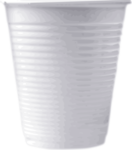 almost everything was packaged in plastic.
almost everything was packaged in plastic.
The more research I do on the topic of plastics and their effects, and their ability to permeate every aspect of our lives, the more concerned I become.
Of the 300 million tons of plastic we use every year, half is used for packaging or single-use items, such as coffee cups or utensils that are used for a matter of minutes and then thrown away.
In addition to polluting our oceans, plastic is also entering our fresh water as well. We have plastic in our atmosphere. We have plastic in salt, in beer, and in bottled water.
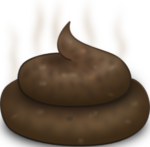 There is even plastic in human feces, which means it’s in our food. “Up to nine different types of plastics were identified in the feces samples, including common household and food-industry staples like polypropylene, polyethylene, and terephthalate.”
There is even plastic in human feces, which means it’s in our food. “Up to nine different types of plastics were identified in the feces samples, including common household and food-industry staples like polypropylene, polyethylene, and terephthalate.”
The average citizen has very little knowledge of the extent that plastic has invaded our lives and the life-cycle of practically every organism on the planet. Sadly, many of the tri-state’s citizens fall into that category and are unaware of the plans to make the Ohio River Valley the next petrochemical hub, and the plastics capital of the USA.
Depressingly, the Great Lakes, the source of 95 percent of our surface freshwater and the drinking water source for over 40 million people in Canada and the USA are being heavily impacted by plastics pollution.
During their 2017 litter pick-up called “Adopt-a-Beach,” volunteers for Alliance for the Great Lakes recovered whole in-tact items such as bags, caps, straws, and bottles, and over 85 percent of the litter picked up was composed “partially or fully of plastic.” The Chicago Park District spent $1.6 million in 2018 to clean up litter on the city’s 26 beaches and “it will cost in an excess of $400 million annually to combat and curtail plastic pollution in the Great Lakes.”
A 2017 article published in the Marine Pollution Bulletin states that the Great Lakes receive about 11,000 tons of plastics a year. So, where does all that plastic come from?
Plastic waste is washed into sewer pipes from our homes and businesses. Trash from streets is carried into storm drains. Washing machines discharge fleece fibers from our clothes. Run-off from landfills carries wastes into sewers. City wastewater treatment plants send microplastics into the lakes. Beachgoers and local neighborhoods are responsible for windblown trash like plastic bags and single use food containers making their way into the lake.
A major concern of the plastic pollution problem in the Great Lakes is the widespread contamination from substances termed microplastics. These are particles that are smaller than 5 millimeters in size, about the size of the top of a pushpin. These particles can be in the form of beads such as those found in exfoliant creams, soaps, toothpastes, lip gloss, and deodorants.
Fibers and fragments are also classified as microplastics. These microplastics can come from fleece fabrics. In a study of marine organisms performed by researchers at the University of

Toronto, microplastics were found in all fish tested.
Most of the plastic fragments found are from degradation of larger plastic items. These are referred to as secondary plastic debris. Primary plastics, those in their original form, can be broken down via exposure to UV light and mechanical weathering. However, complete “mineralization”, where a product is broken down into carbon dioxide, water and other inorganic molecules, happens only after hundreds or thousands of years of exposure to sun and weathering. Therefore, plastics never truly “go away”.
“Among Lakes Superior, Huron and Erie, the highest concentration of microplastics was found in Lake Erie.” Worse, available data on freshwater lakes around the world shows that Lake Erie has the highest average concentration of microplastics.
This is especially disturbing because these plastics are carbon based and can carry toxic substances such as polycyclic aromatic hydrocarbons and polychlorinated biphenyls into the food chain. Both compounds are capable of causing cancer and birth defects. Studies are now underway to determine the potential for these compounds to be transferred to humans via consumption of fish and other organisms.
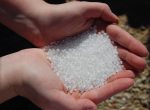 Another source of microplastics are factories around the lakes that use very small particles of pre-production plastic pellets called nurdles. Dr. Sherri Mason, a professor at the State University of NY Fredonia, and a plastics pollution researcher at Pennsylvania State University, has found these small particles on numerous beaches. The nurdles can enter waterways from spillage or accidental container damage at the factories that use them as precursors for plastic products.
Another source of microplastics are factories around the lakes that use very small particles of pre-production plastic pellets called nurdles. Dr. Sherri Mason, a professor at the State University of NY Fredonia, and a plastics pollution researcher at Pennsylvania State University, has found these small particles on numerous beaches. The nurdles can enter waterways from spillage or accidental container damage at the factories that use them as precursors for plastic products.
The plastic-making ethane cracker plant being built in Monaca, PA and the one proposed for Belmont County, Ohio will both produce nurdles. The Shell facility at Monaca will produce 1.8 million tons of plastics each year. This is equivalent to about 80 trillion nurdles a year. A study in Denmark showed some of the consequences to species that eat nurdles are “lower reproductive success, toxicity from chemicals, and reduced feeding.”
The question remains: Can we even begin to tackle the major problem of plastics pollution? Efforts to curb larger plastic debris, such as bans on plastic bags and other single-use items have been met with resistance from industry and politicians. Recycling can be unpredictable, as markets like China have disappeared. Sadly, buying virgin plastic is often cheaper than using recycled plastic.
Additionally, the petroleum industry sees cheap plastics as a new use for its fracked gas.
It will take a massive push by consumers to demand that single use plastics be phased out and that companies become responsible for plastic wastes, including nurdles, from cradle to grave.
And push we must! We certainly don’t need a huge increase in fracking around the region to feed a massive petrochemical build-out in the Ohio River Valley—or anywhere—to produce more plastic in a world already awash in plastic.


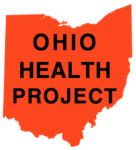

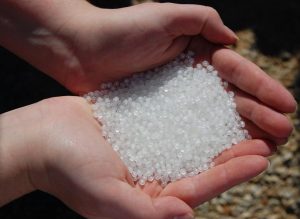






We have known for many decades that we have put way too much carbon dioxide into the atmosphere with a resident time of hundreds of years. The result being a one degree C rise in Earth’s surface temperature with more to come. The result is the likely collapse of civilization in the not too distant future.
In the last decade or so we have also come to realize that we have put vast quantities of myriad types plastic into the environment that will persist for thousands of years. The impacts of these plastics on life is a work in progress; however, what we do know does not bode well for life in general and human life in particular.